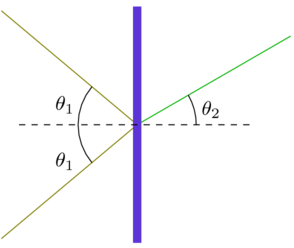Blow your own sail
Posted by David Zaslavsky onThe latest episode of Mythbusters tested a slightly controversial and very physics-related myth: that you can propel a boat forward by putting a fan on the boat and pointing it forward, into the sail. What’s going on here?
First of all, why wouldn’t you expect this to work? Actually, first of all, why would you expect this to work? Think about the naive explanation for why a sailboat moves: the wind pushes forward on the sail, and the sail pushes forward on the boat. So someone who had never heard of physics might think that putting a fan on the boat and pointing it into the sail just gives you a convenient, portable source of wind. Presto, instant speedboat!
But, as explained on the show, that reasoning doesn’t work, because of Newton’s laws of motion. There are actually a couple of different ways to apply Newton’s laws to this scenario:
- Newton’s first and second laws (which are kind of the same thing) say that an object maintains its state of motion unless subject to an external force. The key word there is “external”: if you want your boat to move, you need something outside …
